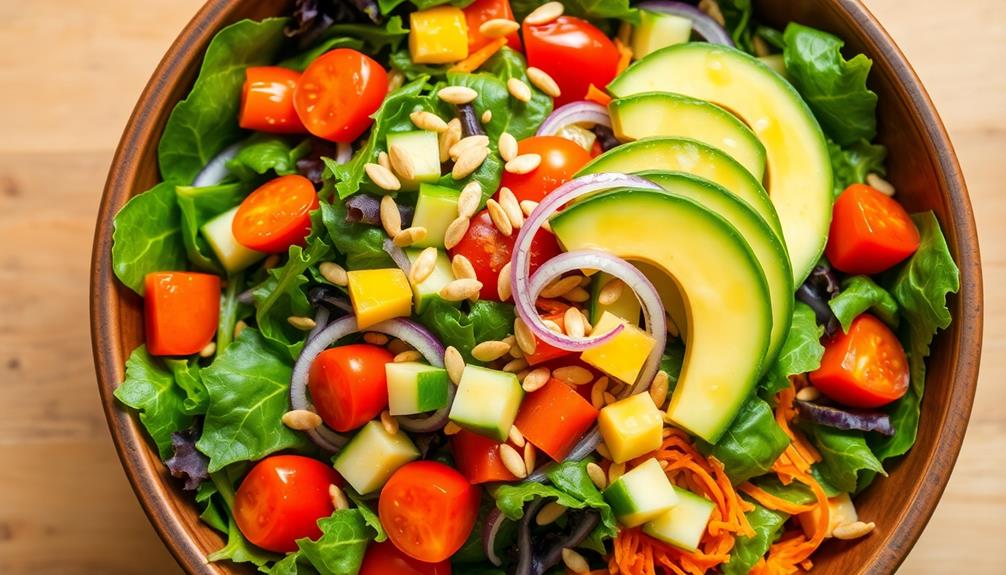Scalloped potatoes are a classic comfort food dish that originated in 17th century Europe. Peasants and farmers would layer sliced potatoes with cheese, milk, and seasonings to create a creamy, indulgent side dish. This tasty recipe gained popularity in America during the 19th century and remains a beloved classic today. To make scalloped potatoes, you'll slice potatoes into thin, even rounds, layer them in a baking dish, and pour a creamy sauce over the top before baking until golden brown and bubbly. The key is using high-quality ingredients and the right baking techniques to achieve the perfect texture and flavor. There's more to discover about this comforting dish.
Key Takeaways
- Scalloped potatoes originated in 17th century Europe as a dish layered with sliced potatoes, cheese, milk, and seasonings.
- The dish gained popularity in America during the 19th century as a comforting side dish, with variations including ham, bacon, or vegetables.
- The key to making scalloped potatoes is to slice the potatoes evenly, layer them with a creamy, cheesy sauce, and bake until golden brown and tender.
- The ideal baking temperature and time are crucial for achieving the perfect texture, avoiding mushy or crunchy potatoes.
- Scalloped potatoes can be served as a side dish or paired with proteins for a complete meal, and leftover can be reused in various recipes.
History
Did you know that the scalloped potato dish has a rich and fascinating history? The origins of scalloped potatoes can be traced back to the 17th century in Europe, where farmers and peasants would layer sliced potatoes with cheese, milk, and seasonings, then bake the dish in a wood-fired oven. This practical and hearty meal helped stretch limited food resources.
The dish eventually made its way to America, where it gained popularity in the 19th century. Scalloped potatoes became a beloved comfort food, often served at family gatherings and holiday meals.
The dish's versatility allowed for endless variations, with ingredients like ham, bacon, or vegetables added to the layers.
Today, scalloped potatoes remain a classic side dish, enjoyed for its creamy texture and rich, satisfying flavor. Whether served as a main course or alongside roasted meats, this timeless recipe continues to delight and nourish generations of home cooks and diners.
Recipe
Scalloped potatoes are a classic comfort food dish that's perfect for a cozy meal or as a side dish. The creamy, cheesy sauce and tender potatoes make for a delicious and satisfying dish.
To prepare this dish, you'll need to take a bit of time, but the end result is well worth it. The key is to thinly slice the potatoes and layer them with a rich and flavorful sauce. Once the layers are assembled, the dish is baked until the potatoes are tender and the sauce is bubbly and golden brown on top. The aroma that will fill your kitchen as it bakes is simply irresistible. If you’re looking for a comforting and indulgent side dish, this creamy mashed potato recipe is sure to hit the spot.
Ingredients:
- 3 pounds russet potatoes, peeled and thinly sliced
- 1 cup heavy cream
- 1 cup milk
- 2 cloves garlic, minced
- 1 teaspoon dried thyme
- 1 teaspoon salt
- 1/2 teaspoon black pepper
- 2 cups shredded cheddar cheese
Instructions:
Preheat the oven to 375°F. In a large saucepan, combine the heavy cream, milk, garlic, thyme, salt, and pepper. Bring the mixture to a simmer over medium heat, stirring occasionally, until it thickens slightly, about 5 minutes. Remove from heat and set aside.
Arrange the sliced potatoes in a greased 9×13-inch baking dish, overlapping the slices slightly. Pour the cream mixture over the potatoes, making sure to cover them evenly. Sprinkle the shredded cheese on top.
Cover the dish with aluminum foil and bake for 45 minutes. Remove the foil and continue baking for an additional 30-35 minutes, or until the potatoes are tender and the top is golden brown and bubbly.
Tips:
- For extra flavor, try adding diced onions or sliced mushrooms to the dish.
- You can also experiment with different types of cheese, such as Gruyère or Parmesan.
- Leftover scalloped potatoes can be reheated in the oven or microwave, and they also make a great topping for shepherd's pie or other casseroles.
Cooking Steps
Slice the potatoes into uniformly thin rounds.
Layer the potato slices in a baking dish, pouring cream over each layer.
Bake the scalloped potatoes at 350°F for about 1 hour, then top with a layer of cheese.
Step 1. Slice Potatoes Uniformly Thin
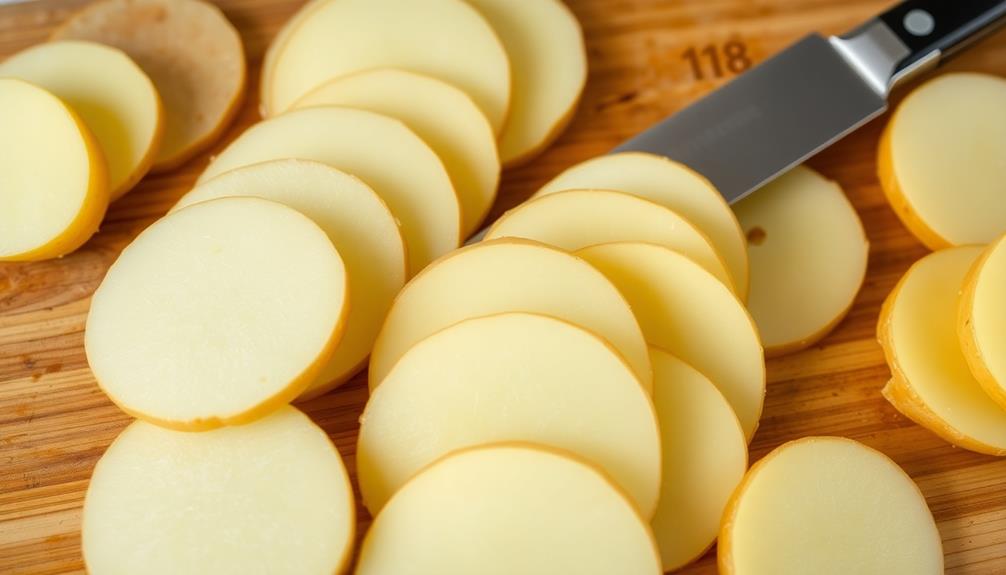
Carefully slice the potatoes into thin, even pieces, roughly 1/8 inch thick. This uniform thickness ensures the potatoes cook evenly, with no under or overcooked areas. Use a sharp knife or a mandoline slicer for the best results – the thinner the slices, the quicker they'll cook.
As you slice, try to keep the pieces around the same size and shape. This will help them layer neatly in the baking dish.
For easy, even slicing, start by cutting the potatoes in half lengthwise. This provides a flat surface to work with. Then, slice each half crosswise into thin, uniform pieces. Pay close attention to the thickness, adjusting your knife or mandoline as needed.
The goal is slices that are delicate yet sturdy enough to hold their shape during baking. With perfectly sliced potatoes, you're well on your way to creamy, decadent scalloped potatoes.
Step 2. Layer the Potato Slices

With your beautifully sliced potatoes ready, begin layering them in your baking dish.
Start by placing a layer of potato slices on the bottom, overlapping them slightly to create an even surface. Sprinkle a light dusting of salt, pepper, and any desired herbs or spices over the layer.
Continue this process, creating additional layers, until you've used up all the potato slices.
Be sure to season each layer to ensure even flavor throughout. As you build the layers, try to keep the slices as uniform in thickness as possible for even cooking.
Once all the layers are in place, you can pour the cream or milk over the top, making sure to cover the potatoes completely.
This liquid will help the potatoes cook through and create the signature creamy texture of scalloped potatoes.
With the dish assembled, it's now ready to be baked to perfection.
Step 3. Pour Cream Over Layers
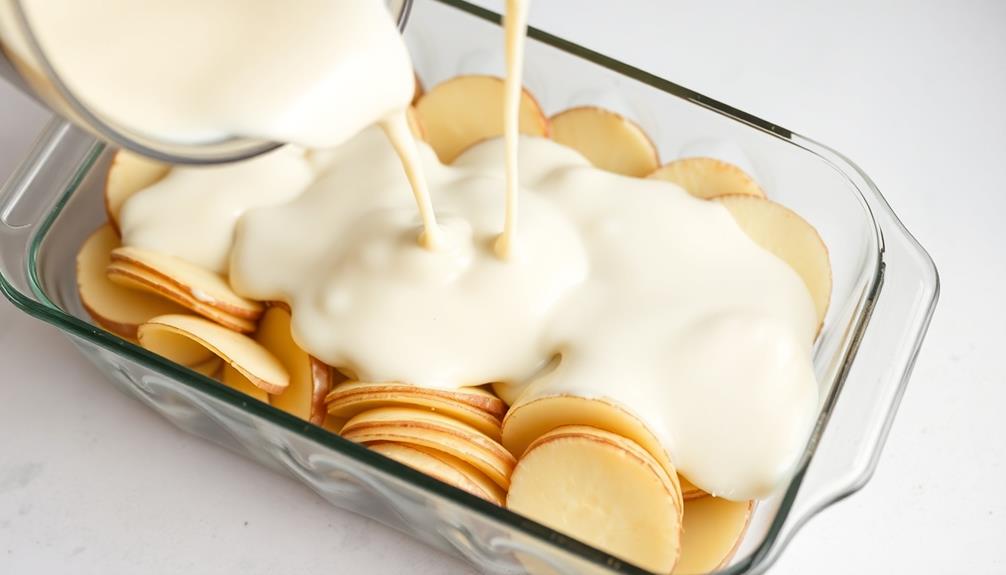
Once you've layered the potato slices, it's time to pour the cream or milk over the top. This step is crucial for creating the signature creamy, decadent texture of scalloped potatoes.
Use a high-quality heavy cream or whole milk for best results – the richer the dairy, the creamier the final dish.
Slowly pour the cream over the layered potatoes, making sure to evenly distribute it across the entire surface. The cream should come up just below the top layer of potatoes. If needed, add more cream to ensure the potatoes are fully submerged.
For extra flavor, you can also mix in a bit of garlic, thyme, or other seasonings with the cream before pouring. This will infuse the potatoes with delightful aromatic notes.
Step 4. Bake at 350°F for 1 Hour
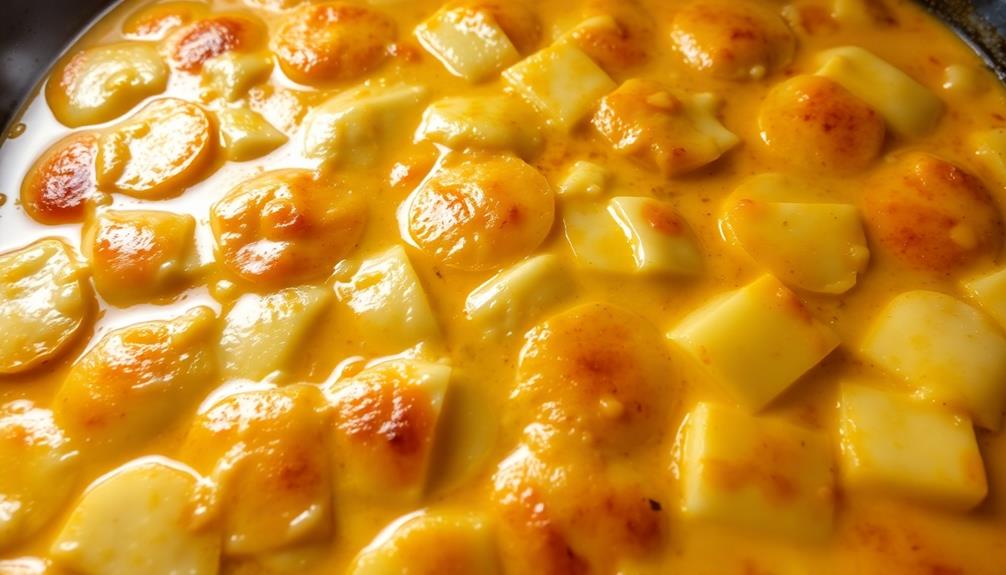
After pouring the cream over the layered potatoes, preheat your oven to 350°F. This temperature ensures the potatoes will cook through and develop a delightful golden-brown crust on top.
Once the oven is preheated, carefully transfer the baking dish into the center of the oven. Bake the scalloped potatoes for a full hour, allowing the cream to reduce and the flavors to meld together.
During the baking process, the kitchen will be filled with the mouthwatering aroma of the dish. Resist the temptation to open the oven door frequently, as this can disrupt the cooking and cause the potatoes to bake unevenly.
Instead, set a timer and resist the urge to peek until the hour has elapsed.
When the timer goes off, use oven mitts to remove the baking dish from the oven. The scalloped potatoes should be bubbling and the top should be beautifully browned.
Allow the dish to rest for 5-10 minutes before serving, as this will allow the creamy sauce to thicken slightly.
Step 5. Cover With Cheese
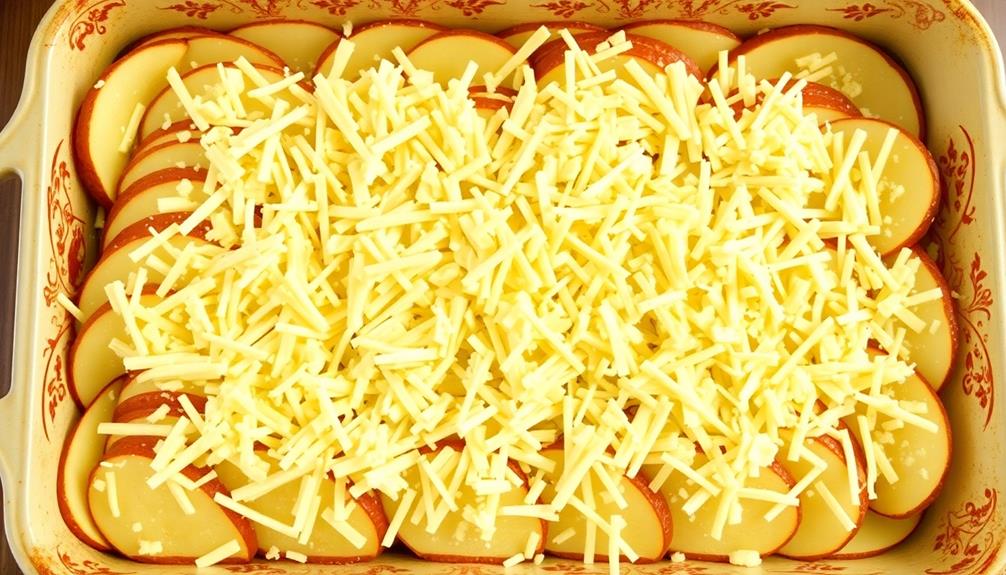
Grab a handful of your favorite shredded cheese, whether it's cheddar, Gruyère, or a blend of cheeses. Sprinkle it generously over the top of your partially baked scalloped potatoes. The cheese will melt and create a delectable, golden-brown crust, sealing in the creamy, tender potatoes beneath.
Ensure the cheese covers the entire surface, leaving no bare spots. This won't only enhance the presentation but also provide an even distribution of flavor and texture. For an extra indulgent touch, you can layer slices of cheese between the potato layers before baking.
Once the cheese has melted and the top is bubbly and crisp, your scalloped potatoes are ready to serve. The combination of the creamy, starchy potatoes and the rich, savory cheese creates a harmony of flavors and textures that will delight your taste buds.
Enjoy this comforting and satisfying side dish alongside your favorite main course.
Final Thoughts
Although scalloped potatoes are a classic side dish, it's important to keep a few key points in mind as you prepare this dish.
First and foremost, don't be afraid to get creative with your seasonings. While the traditional blend of salt, pepper, and cheese is delicious, experiment with herbs, spices, or even a touch of garlic to elevate the flavor.
Additionally, pay close attention to the baking time and temperature. Overcooked potatoes can become mushy, while undercooked ones will be crunchy.
Aim for a golden-brown top and fork-tender potatoes throughout.
Frequently Asked Questions
How Long Do Scalloped Potatoes Typically Last in the Refrigerator?
Typically, cooked potatoes can last 3-5 days in the refrigerator when stored properly. However, the exact shelf life depends on various factors like how they're prepared and stored. Make sure to keep an eye on their condition before consuming.
Can I Use Sweet Potatoes Instead of Regular Potatoes?
You can certainly use sweet potatoes instead of regular potatoes. The flavor and texture will be different, but it can work well in scalloped potatoes. Just adjust the seasonings to complement the sweetness of the sweet potatoes.
Do I Need to Peel the Potatoes Before Slicing?
You don't necessarily need to peel the potatoes before slicing them. The skin can provide extra texture and nutrition, but peeling them is an option if you prefer a smoother dish.
Can I Make Scalloped Potatoes in Advance and Reheat Them?
You can definitely make scalloped potatoes in advance and reheat them. Just be sure to store them properly and reheat them gently to prevent the potatoes from becoming dry or rubbery.
How Do I Prevent the Potatoes From Becoming Mushy?
To prevent your potatoes from becoming mushy, slice them thinly, don't overcrowd the dish, and don't overcook them. Bake them just until they're tender, then reheat gently when ready to serve. This will keep your scalloped potatoes from turning into a mushy mess.


